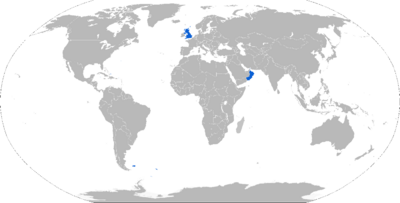Engineering:L30
| L30 | |
|---|---|
 Gun of a Challenger 2 tank of the Royal Scots Dragoon Guards, Basra, Iraq, November 2008 | |
| Place of origin | United Kingdom |
| Service history | |
| In service | 1989–Present |
| Used by | UK, Oman |
| Production history | |
| Designer | Royal Ordnance Factory, Nottingham |
| Manufacturer | Royal Ordnance Factories |
| Specifications | |
| Barrel length | 55 calibres (6.6 meters) |
| Calibre | 120 mm (4.7 in) |
The L30 is a 120 mm rifled tank gun used by the British Army and Royal Army of Oman. It is fitted in the turret of the Challenger 2 main battle tank. It is an improved production model of the Royal Ordnance L11 series of rifled tank guns.
Challenger Armament
The Challenger Armament or CHARM project was intended to provide a new main armament for the Challenger 2 tank and to be retro-fitted to the Challenger 1. It involved three components: the gun, developed by the Royal Ordnance Factory, Nottingham, the Depleted Uranium (DU) APFSDS round, and a propellant charge for it.
After earlier projects were cancelled, the EXP 32M1 experimental gun was re-titled the XL30E3 and accepted for production as the L30 in 1989.
Design
The barrel is 55 calibres long (L55) and is made of electro-slag refined (ESR) steel. The bore and chamber are electro-plated with chromium to give a barrel life of 1,500 effective full charges.
The breech mechanism is a split sliding-block breech. One vertically sliding block holds the obturation ring (which is necessary because the propellant charges are combustible cases or bags) and is locked for firing by a second block. When the second block falls, the first is released to open the breech.
Ammunition
The ammunition types which are currently or were formerly in use include:[citation needed]
- APFSDS L23. This has a monobloc tungsten nickel copper long rod penetrator, and used the L8 combustible case charge, although it can use a modified L14 charge. The muzzle velocity is 1,534 metres per second (5,030 ft/s). [citation needed] It was used in the Gulf War, but is now probably withdrawn.
- APFSDS L26 (CHARM 1). This has a depleted uranium (DU) long rod penetrator and uses the L14A1 or L14A2 combustible case charges.
- APFSDS L27A1 (CHARM 3). This also has a DU projectile, but with a greater length-to-diameter ratio and is thus "significantly more effective". The round uses the L16A1 combustible case charge.
- APFSDS L28A1. A completely brand new APFSDS shot. Also used DU projectile, with much greater length-to-diameter ratio.
- CHARM 3 training round (C3TR). Because DU rounds are normally fired in wartime only, a tungsten-based projectile is used for training purposes. Opposition to the use of depleted uranium even in wartime has led to the further development of the training round as the L28 round.
- DS/T Prac L20A1 This is a relatively low-cost training projectile with the subprojectile penetrator made from steel with a light alloy nose. It is lighter, but matches the L23 trajectory to 2,000 metres (6,600 ft). Its use also extends barrel life.
- HESH L31 This is employed as a general purpose high explosive round, though it also has a good anti-armour performance, and is effective against fortifications and structures. The HESH L31 is fired using the L3 bag charge. Muzzle velocity is 670 metres per second (2,200 ft/s).
- SH/Prac L32A6 A training projectile, which matches the trajectory of the HESH L31. It is available as a completely inert form, or can be filled with an inert HE substitute (a composition of calcium sulphate and castor oil) or an inert HE substitute plus a live fuze and a flash pellet for spotting purposes.
- WP Smoke L34 Matches the HESH L31 in ballistic performance. It is the same shape, though is supplied in a different colour to prevent confusion.[1]
Operators
Current operators
 Oman
Oman United Kingdom
United Kingdom
See also
Weapons of comparable role, performance and era
- GIAT CN120-26/52 French smoothbore equivalent
- Rheinmetall 120 mm gun German smoothbore equivalent
- IMI 120 mm gun Israeli smoothbore equivalent
- 2A46 125 mm gun Russian smoothbore 125 mm equivalent
References




